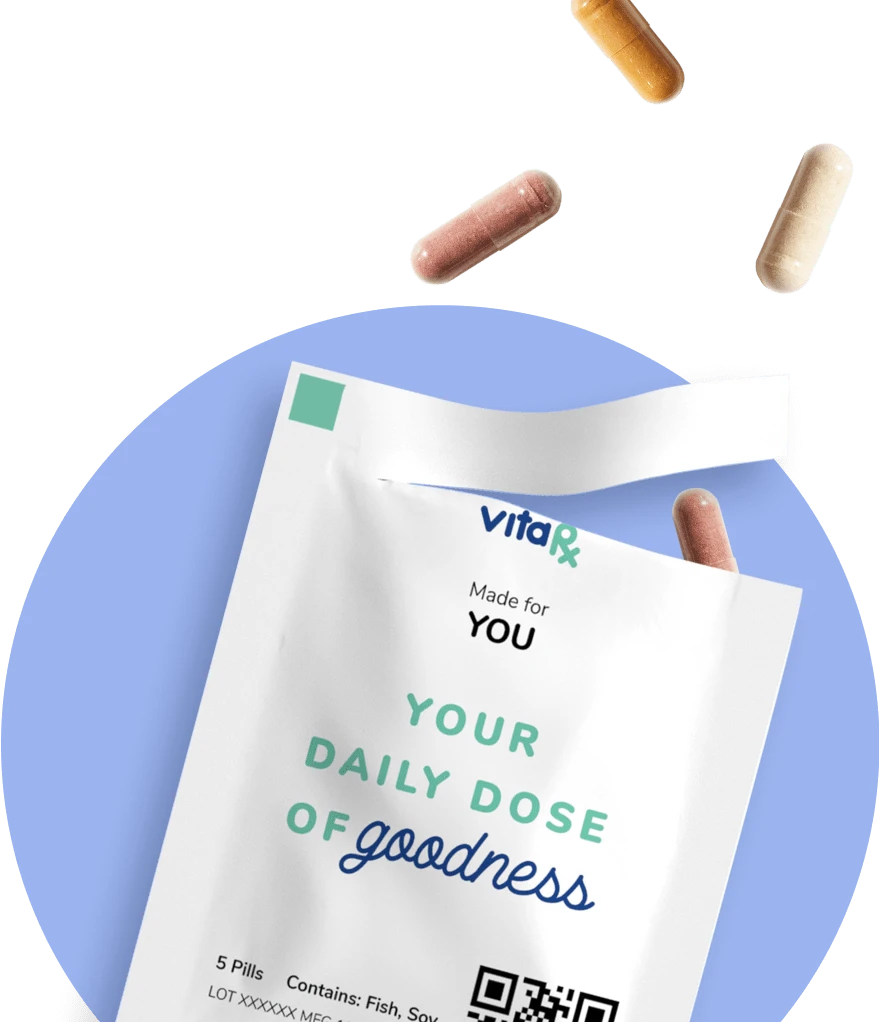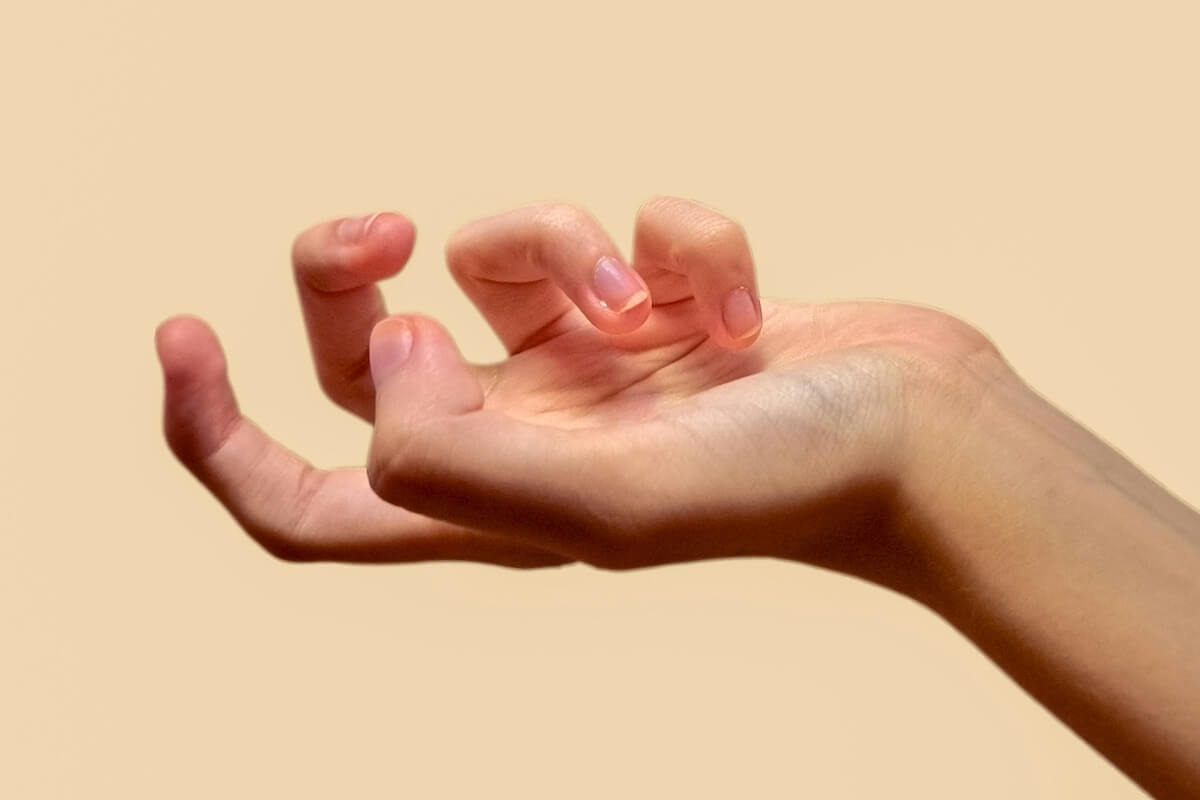Last update: November 6, 2025
5 minute read
What Is Red Light Therapy? Understanding How Light Can Influence Your Cells
Discover how targeted red and near-infrared light can power your cells, rejuvenate your skin, ease pain, and what the science actually shows.

By Derick Rodriguez, Associate Editor
Edited by Dr. Dimitar Marinov, MD, RDN, PhD
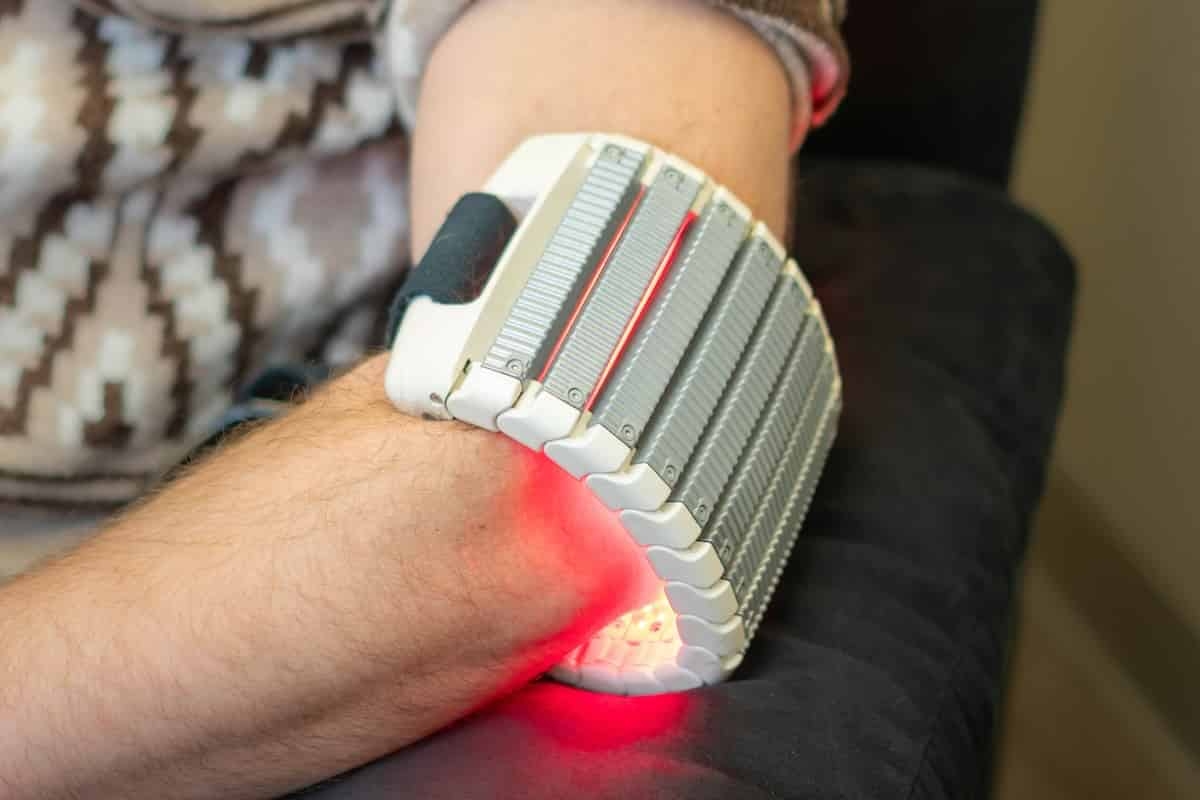
Could a certain kind of light influence how your cells function? Red light therapy (RLT) has gained attention in wellness and recovery circles for its potential to support overall skin appearance, ease discomfort, and promote balance, but separating hype from science can feel overwhelming.
This article explores what RLT is, how it works at a cellular level, what current studies suggest, safety considerations, and practical tips if you’re curious about trying it.
Key takeaways
- Red light therapy uses specific wavelengths of red and near-infrared light, often between 600-1000 nm
- Research suggests potential effects on cellular energy processes and blood flow, though findings are still emerging
- Consistency, wavelength, and dosage are key factors when using devices at home or in clinics
What is red light therapy?
Red light therapy (RLT) uses low-level red and near-infrared light to expose the skin or targeted body areas. Unlike UV tanning beds, RLT doesn’t use radiation linked to skin cancer and operates at non-heating levels.
It's sometimes called:
- Low-level laser therapy (LLLT)
- Low-power laser therapy
- Photobiomodulation
The working theory: there are some working hypotheses related to the energy production mechanisms in the cells, but the real mechanism for the benefits of RLT (if any really exist) remains unknown.
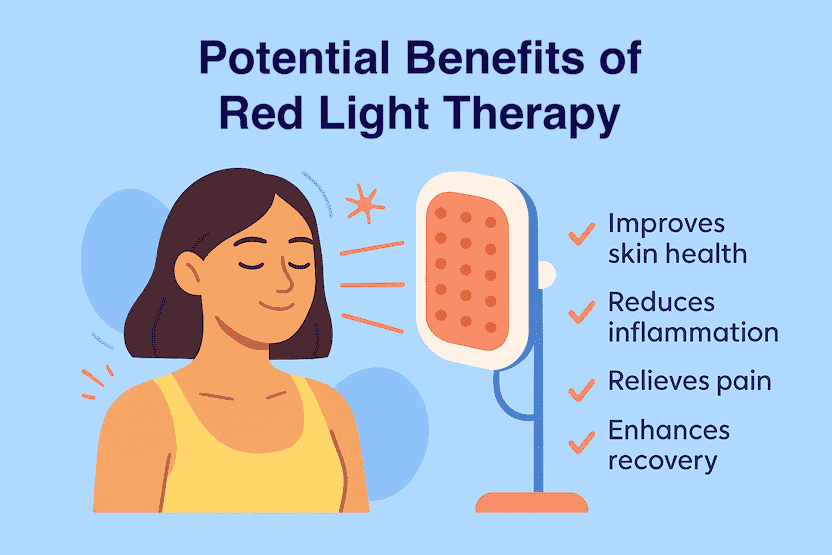
How red light therapy works (hypothesized)
Laboratory studies suggest a potential process:
- Light absorption: Specific wavelengths (≈600–1000 nm) are absorbed by mitochondrial enzymes like cytochrome c oxidase.
- Energy support: This may help mitochondria produce more ATP, the molecule cells use for energy.
- Signaling effects: Increased ATP and mild changes in reactive oxygen species (ROS) could trigger repair responses, better circulation, and anti-inflammatory pathways.
These mechanisms are hypotheses based on early data, not guaranteed effects for everyone.
Potential uses under study
Skin health & aging
Some small studies suggest RLT may support collagen activity, which could improve skin texture and elasticity over time. Other research has explored its potential to reduce visible wrinkles, redness, and sun damage, though results vary.
Wound recovery
Clinical trials are exploring whether RLT can support faster healing after surgery, injuries, or ulcers. Some studies have noted positive effects, but larger, controlled trials are needed before drawing conclusions.
Hair support
Reviews of multiple small studies suggest RLT may stimulate hair follicles and increase hair density in people experiencing pattern hair loss. However, consistency, wavelength, and device strength are key variables.
— Dr. Dimitar Marinov, MD, RDN, PhDThe evidence on RLT is still preliminary and inconsistent. RLT appears generally safe when used correctly, but device quality, wavelength, and dosing matter greatly, and it should not be viewed as a substitute for standard medical care. For those interested, it may be tried as a complementary approach—ideally with professional guidance and realistic expectations.
Pain & inflammation
Some studies suggest RLT could temporarily ease discomfort associated with inflammation-driven conditions like arthritis or tendinopathy. Still, these findings are preliminary and shouldn't replace standard care. Large analyses do not support such benefits.
Cognitive & sleep research
Early-stage trials are looking at how RLT might influence melatonin production, sleep quality, and even cognitive performance, but much more evidence is needed here. Overall, a benefit is unlikely based on the latest data.
Comparing at-home vs. Professional devices
Feature | At-Home Devices | Professional Devices |
|---|---|---|
Power | Lower irradiance | Higher, more targeted light delivery |
Effectiveness | May take longer to notice changes | Often used in clinical protocols |
Examples | Masks, handheld wands, small panels | Full-body beds, medical-grade panels |
Cost | $150–$600 | $80–$150 per session |
Best For | Subtle, cosmetic-focused goals | More intensive treatment plans |
VitaRx Tip
If considering an at-home device, look for FDA-cleared products and follow manufacturer instructions carefully.
Best practices for safe use
- Follow instructions: Overuse can lead to burns or irritation; more isn’t better.
- Start small: Use lower intensities and shorter durations when starting out.
- Protect your eyes: Always wear protective goggles; sunglasses are not sufficient.
- Check medications: Some drugs increase photosensitivity, so consult a healthcare provider if unsure.
- Be consistent, not aggressive: Research protocols usually span weeks to months, not days.
Potential risks & precautions
While RLT is generally considered low-risk when used correctly, risks include:
- Skin irritation or burns from prolonged exposure or broken devices.
- Eye damage if unprotected.
- Photosensitivity for those on certain medications or with conditions like lupus.
- Inconsistent device quality; not all products on the market are tested or FDA-cleared.
Bottom line: Discuss RLT with a healthcare provider if you have existing conditions, skin sensitivities, or are pregnant.
Frequently asked questions (FAQ)
Here are some of the most frequently asked questions about red light therapy.
Final thoughts
Red light therapy is intriguing, not a miracle. Emerging research suggests it may support cellular energy and wellness in certain contexts, but it isn’t a substitute for medical care.
If you’re curious, start small, choose reputable devices, and use RLT as a complementary tool, not a cure-all. As research grows, so will our understanding of where red light therapy truly shines.
Sources and references
- A Controlled Trial to Determine the Efficacy of Red and Near-Infrared Light Treatment in Patient Satisfaction, Reduction of Fine Lines, Wrinkles, Skin Roughness, and Intradermal Collagen Density Increase - PMC
- Effect of photobiomodulation as preventive treatment of diabetic foot ulcer: randomised, controlled, double-blind, clinical trial protocol | BMJ Open
- A Systematic Review and Meta-analysis of Randomized Controlled Trials of United States Food and Drug Administration-Approved, Home-use, Low-Level Light/Laser Therapy Devices for Pattern Hair Loss
- The Effects of Photobiomodulation on Knee Function, Pain, and Exercise Tolerance in Older Adults: A Meta-analysis of Randomized Controlled Trials - Archives of Physical Medicine and Rehabilitation
- Effects of Near-Infrared Light on Well-Being and Health in Human Subjects with Mild Sleep-Related Complaints: A Double-Blind, Randomized, Placebo-Controlled Study
Editor

Derick Rodriguez
Derick Rodriguez focuses on editing health and wellness-related content. With over half a decade of experience in the digital realm, Derick has developed a unique skill set that bridges the gap between complex health concepts and accessible, user-friendly communication. His approach is deeply rooted in leveraging personal experiences and insights to illuminate the nuances of health and wellness topics, making them more approachable and empowering readers with knowledge and confidence.
Fact checker

Dr. Dimitar Marinov
Dr. Marinov has years of experience in scientific research and preventive and clinical medicine. His publications in peer-reviewed journals are on nutritional status, physical activity, and musculoskeletal disorders among adolescents.
At VitaRx, we're not just passionate about our work — we take immense pride in it. Our dedicated team of writers diligently follows strict editorial standards, ensuring that every piece of content we publish is accurate, current, and highly valuable. We don't just strive for quality; we aim for excellence.
Related posts
While you're at it, here are some other relevant articles you might be interested in.
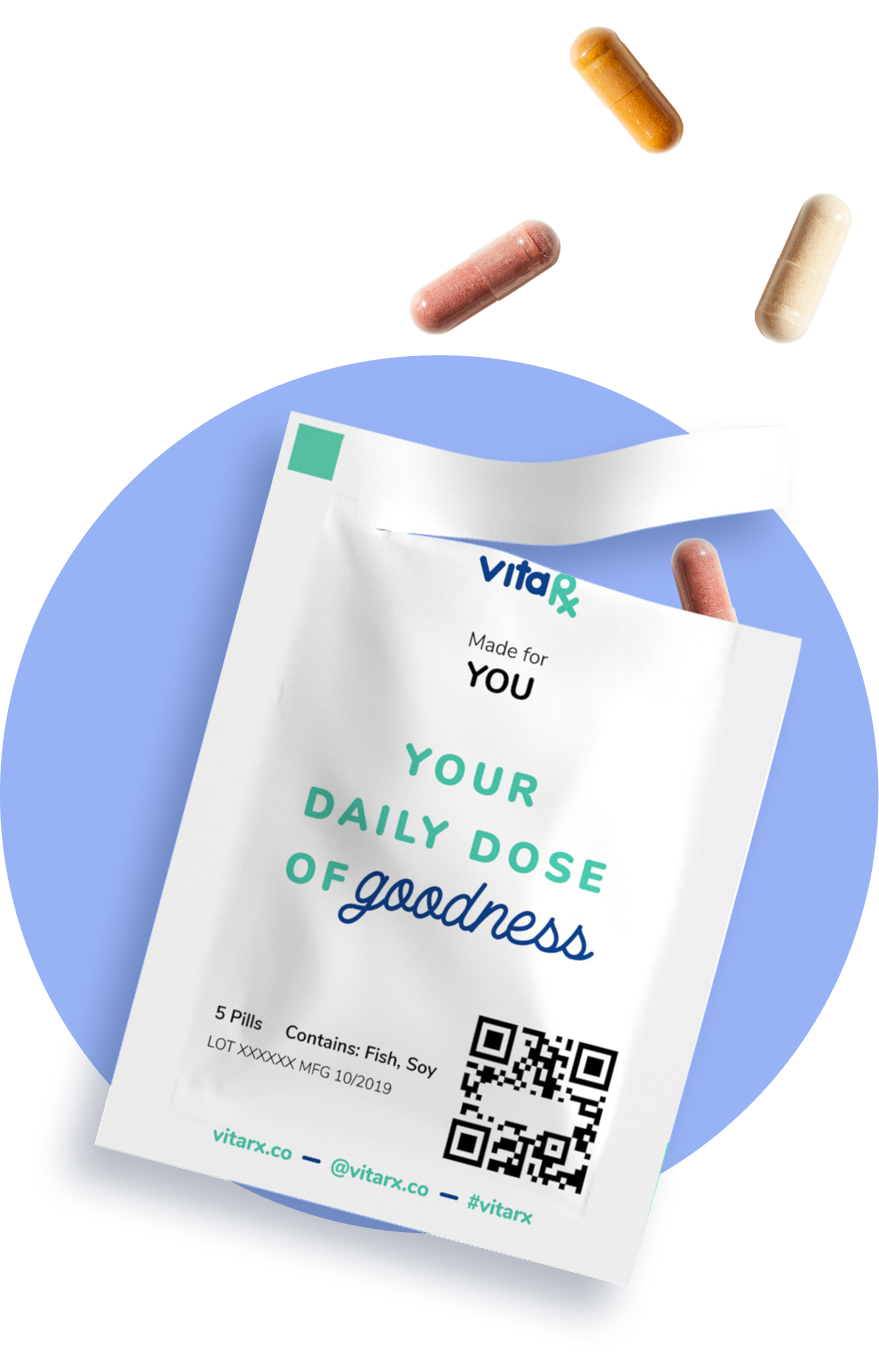
Get your personalized vitamin recommendations in less than
5 minutes.
Get your personalized vitamin recommendations in less than
5 minutes.
